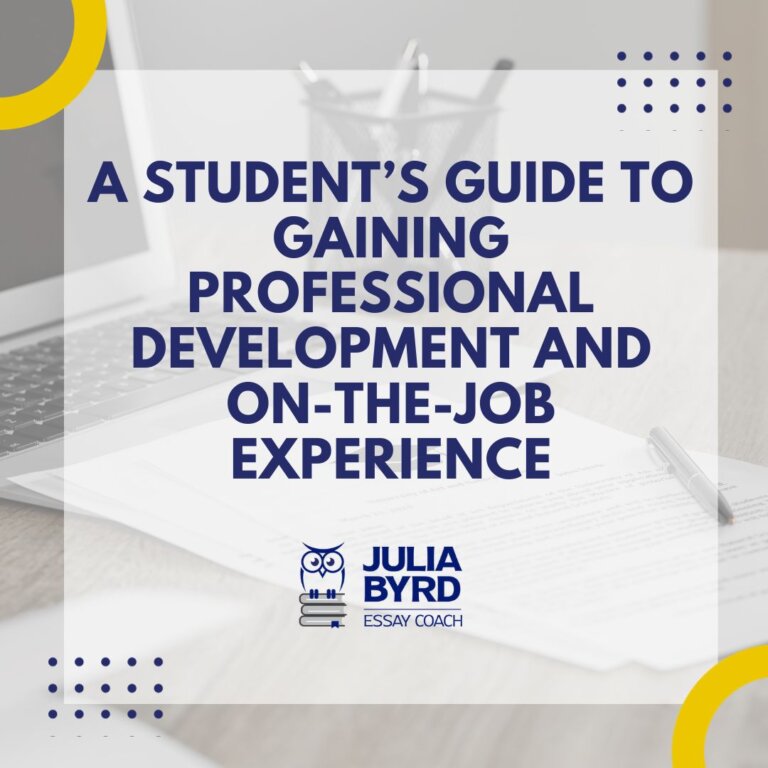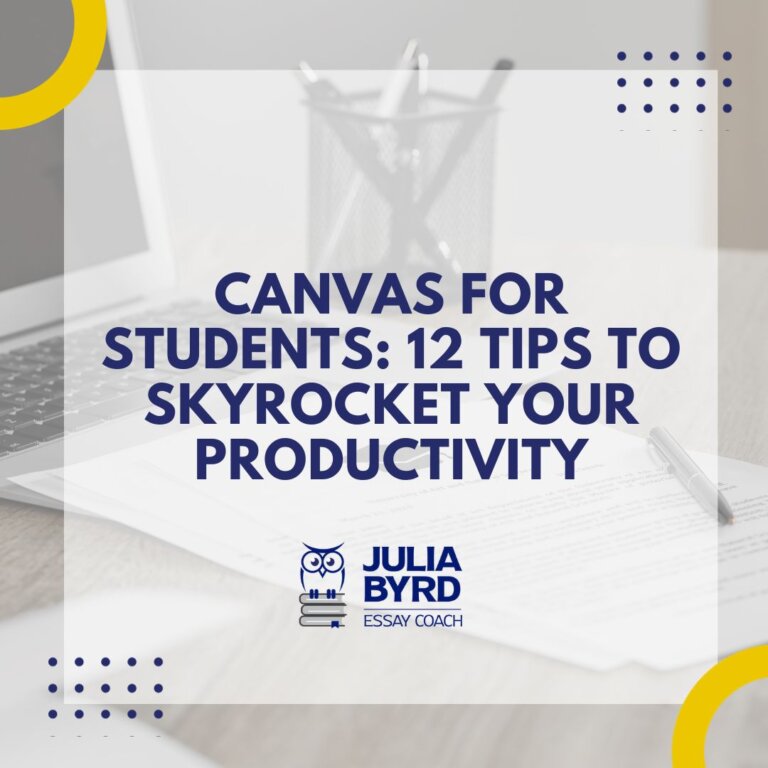12 College Admission Tips From Parents


Hindsight may be 20/20 (or is it 2021?), but it isn't all for naught. Others can learn from what we did (or didn’t do). I asked parents of current college freshmen what lessons they learned during the college search and application process—both what they wished they'd known and what they're glad they did—and compiled a list of their top 12 admission tips. Here’s the good, the bad, the ugly, and the brilliant.
Admission Tip 1. Start Collecting Materials Early
A stitch in time saves nine. And that’s true in college admissions, too.
When your student starts freshman year (or even 8th grade, if they’re taking high school courses), start a college binder to collect information: awards, accomplishments, community service hours, transcripts—all of it. You can even start curating a resume. Yes, it seems early, but trust me: This will make requesting letters of recommendation and completing applications that much easier when the time comes. You can create the binder yourself with last year’s beaten-up math binder, or you can find pre-organized ones online, like this one from ScholarPrep Nation.
If you have an art student, start curating that portfolio early, and have them attend as many portfolio days and portfolio reviews as they can. Students should take that advice to heart and implement it for maximum improvement.
Admission Tip 2. Set Expectations Early
A college education can be expensive, no doubt. And while there are options for bringing those costs down, sometimes schools remain out of reach. It’s OK to set budget expectations with your student before the college search begins. Lay out what you can afford, whether an airplane-ride-away school is in the budget or if it needs to be a reasonable drive, and what (if anything) you expect them to contribute (earning scholarships, taking an on-campus job, etc.).
Also do your (financial) research on the school. Sometimes, out-of-state private universities can be less expensive than in-state public schools. Google “[school name] common data set” to find a wealth of information about the school, including average need-based financial packages and average merit-based scholarship packages. While it may be possible to negotiate these packages, it’s not something to count on.
Admission Tip 3. Form a Team
Yes, the application process can cause friction between parents and students (been there, done that). So figure out early on how you can work as a team. Do you create a shared Google Doc to keep track of to-do items and deadlines? Do you block out from 7-8 on Sunday nights as the time to talk to your student about admissions (at least, until applications kick into high gear)?
Also discuss whether your team needs outside help. That may include an independent educational consultant, an SAT/ACT prep coach, or an essay coach. If so, start getting recommendations from friends/family or your school’s college and career center and then interview these professionals to see if they’d be a good fit.
Admission Tip 4. Take Off the Pressure
There’s a lot of pressure on kids today. I don’t know about yours, but my kids had to choose a “pathway” to study in high school (and had to select from limited options). But how many high school — even college — students know what they want to do? Heck, I didn’t know until after grad school.Even then, I thought I wanted to do drug and alcohol abuse prevention programs for high schoolers. Since then, I’ve helped sell municipal bonds, been a proofreader, done technical writing, become a content writer, and transitioned into essay coaching. Was it a convoluted way to get here? Absolutely. Would I have it any other way? Nope. And I was grateful to my parents for supporting me throughout. My dad even gave me his 1960s editing/proofreading book for me to study for my proofreading exam. (It worked: I got the job!)
All this to say: Don’t expect your 16- or 17-year-old will have it all figured out. Support their interests, even if you don’t think it'll make for a profitable career. Encourage them to follow their passions. They’ll figure it out. Just like I did. And like you probably did, too.
And if they really don’t know what they want to study/do and they want some help, encourage them to talk with their school’s college and career counselor. Or even reading a book like “What Color Is Your Parachute for Teens” can help.
Be open to the fact that for some students, college isn’t the next step. Or the immediate next step. Trade schools, gap years, the military — these can be great options for some students. Remember: A college degree doesn’t necessarily equal or predict success.
Admission Tip 5. Take Advantage of AP and Dual Credit Classes
Not only do AP and dual credit (DC) classes look good on college applications, but they can also save you some $$. Today, it’s not hard for students to graduate high school with an associate’s degree or even enough credits to be considered a sophomore on paper when they set foot on campus their freshman year. So when you and your student browse through the high school course catalog and select courses for the following year, consider adding AP and DC courses to the mix.
Bonus: Colleges like to see students taking increasingly challenging classes throughout their high school career, and taking AP and DC classes is one way to do it. But remember tip #4, and don’t push your student into taking something they really don’t think they’re ready for or can be successful in.
Admission Tip 6. Create Service Opportunities
Do COVID restrictions or busy athletic or extracurricular schedules prevent your student from being able to do as much volunteer work as they’d like? The solution can sometimes be as easy as creating their own community service project or doing virtual service. Whether they’re organizing a canned food drive in their neighborhood or tutoring junior high math students on Zoom, these opportunities make for great entries in the activity list and resume and show both leadership and service. Their experience might even make for a great topic for scholarship and admission essays.
Admission Tip 7. Keep Scholarships in Mind
Christen Arafeh, founder of Hive College Buzz, encourages students to apply to a variety of schools—large and small, public and private, near and far—to maximize their scholarship chances. She also recommends they get their applications in early. Submitting them ahead of deadlines can sometimes mean access to more merit and scholarship money. And that means less money in student loans! Don’t forget to check if scholarships are considered with the initial application (Texas A&M, for example, lets you apply for scholarships right inside their application) or if students must submit a separate application.
Learn more about the scholarship assistance Hive College Buzz offers.
Admission Tip 8. Research, Research, Research
It goes without saying, but your student should do as much research as possible about their top choices. Make sure these schools offer what they need and expect so there aren’t any surprises when they move in.
I spoke with one freshman student who found herself transferring to another university after her first semester because her “dream school” turned out to be not the right fit once she actually got on campus—despite having done her research.
“School X boasted about their flexibility and how they encourage a diverse academic experience,” she told me “I’d told my advisor I wanted to double major in entrepreneurship and environmental studies. Four months later, he told me business students weren’t advised to double major outside the business school. In fact, it would be rare, if not impossible, for me to do so.” What's more, despite the school having a well-recognized music department, her choir group’s performances had little to no live audiences, and scheduling conflicts with afternoon and evening classes made it nearly impossible to consistently attend extracurricular activities. Overall, she said, School X “just didn’t align with my image of a realistic and extracurricular structure.” She’s now at School Z, where classes end at 4 p.m. to ensure students can get involved with clubs and where she’s had an easier time creating the ideal academic and extracurricular experience.
Now, sometimes you just won’t know something like this will happen until you’re on campus and getting involved. Would some extra research have alerted this student to these issues? Maybe, maybe not. Who would’ve thought to ask how many people generally attend performances? But by conducting as much research as possible—taking tours, connecting with students, and digging deep into online resources—we hope you’ll have fewer surprises.
Admission Tip 9. Start Early
Once students finish junior year, I always encourage them to first take a breather (we all need one by then) but then jump into starting their applications and essays over the first part of summer. Yes, it's kind of a bummer for them to spend their free time writing essays and filling out applications and looking for scholarships, but doing even just a little bit every day early on will let them be done by the time school starts—giving them the freedom to enjoy senior year.
For admissions essays, most prompts for the main personal statements are released in the early to late spring, and students can start brainstorming right away. Supplemental essays are often not released until the summer, and these essays are where I don't advise trying to get ahead.
I've had too many students assume that last year’s prompts will be the same as this year's prompts and start writing. Then when they learn the prompts have changed, they've got an essay that they may not be able to use and have to start over. I encourage students to become familiar with last year’s supplemental essay prompts and start thinking about what they might write about if those prompts hold firm, but hold off on the actual writing until the updates are released.
Here are my three favorite sources for supplemental essay guidance. Bookmark them now so you’ll have them when you need them!
Admission Tip 10. Know That First Semester Isn’t Always Easy
As students hop forward into that first semester away at college, they should know they may not find their tribe right away. Being in a pandemic certainly hasn’t helped students socialize. But even under the best of conditions, the first semester of freshman year is a whirlwind of transitions, and it can be hard for students to find the friends they want to be with. Seeing high school friends on Instagram living it up and in crowds of BFFs can make students feel even worse, but remember that appearances can be deceiving. They may be just “doing it for the ‘gram” and may really feel just as alone.
The first semester is likely to be hard. So students should embrace (or at least expect and understand) that hardness and find ways to get involved and meet people. But here’s the good news: If the school turns out to be not the right fit, decisions can be changed. Students can apply to new schools as transfer students. Options are available, and it’s not a sign of failure to admit a school wasn’t “the one.”
Admission Tip 11. Remember: It’s Never the Same Experience Twice
My son (a junior as of this writing) is totally different from his sister (a college freshman). And their college search and application processes will be just as different. So I’ll need to approach searching for right-fit colleges, prepping for the ACT or SAT, and writing essays in new ways. You might need to do the same. Whether you went through the admissions process last year or several years ago, some things have likely changed. And your children are not the same. So take the general guidance you’ve learned and apply it, but also know that you’re going to have to freestyle it a little, too.
Admission Tip 12. Be Willing to Go Off the Beaten Path
With more than 5,000 colleges and universities in the United States alone, there’s a great school for your student out there. Trust me, there is. And what’s right for your student may not be right for someone else. And what turns out to be right for your child may not be a school you all initially had on your radar. Don’t try to keep up with the Joneses and think that just because Billy applied to Harvard or USC or Tulane, your student should, too.
And don’t get too hung up on “name brands.” They may not always give your student as big of an advantage as you think. Don’t believe me? Check out “Where You Go Is Not Who You’ll Be.” (I bought the audiobook version and listened to it on my many, many trips back and forth to school.) Frank Bruni uses statistics, surveys, and stories of successful people who didn't attend highly competitive schools to show that any school can get students where they want to go.
Trust the Process
The admissions process can be overwhelming—for students and for parents. But knowing a little about what to expect and hearing others’ experiences can be both helpful and reassuring. By starting early, being thorough, and taking the time to breathe, you and your student can chart a course for a successful college admissions process. Hopefully, these admission tips help.
Know that you don't have to go it alone. Need help with admission essay? Complete this form, and I'll get in touch!









